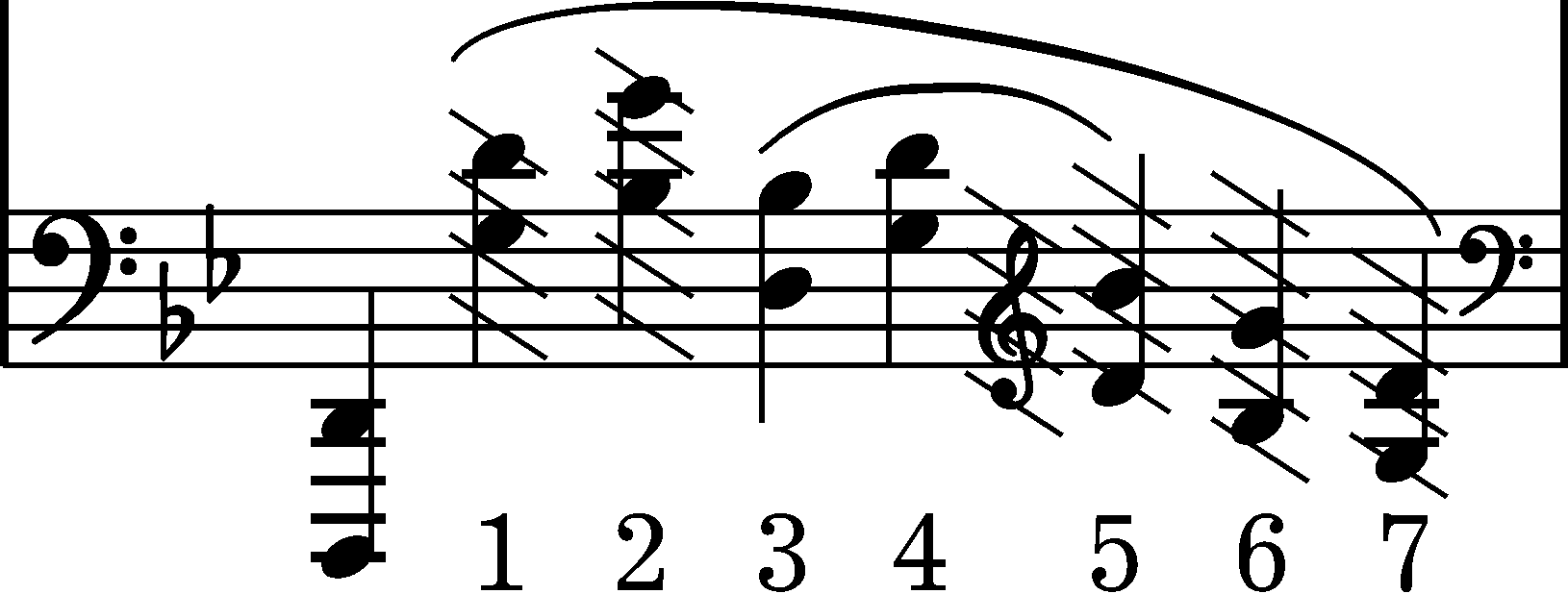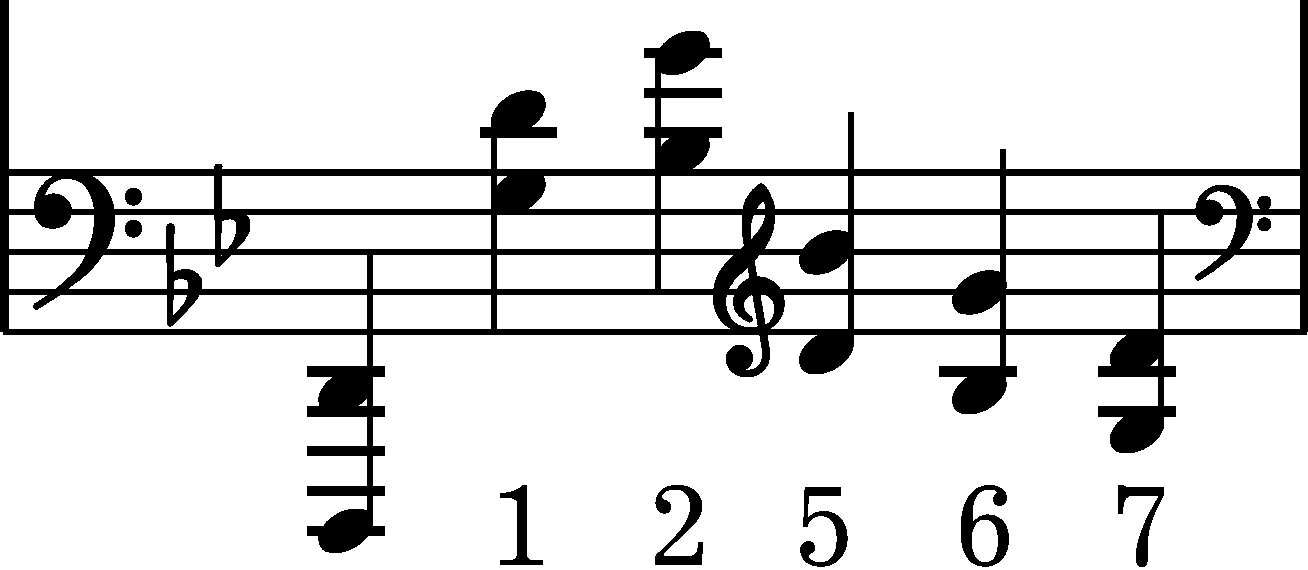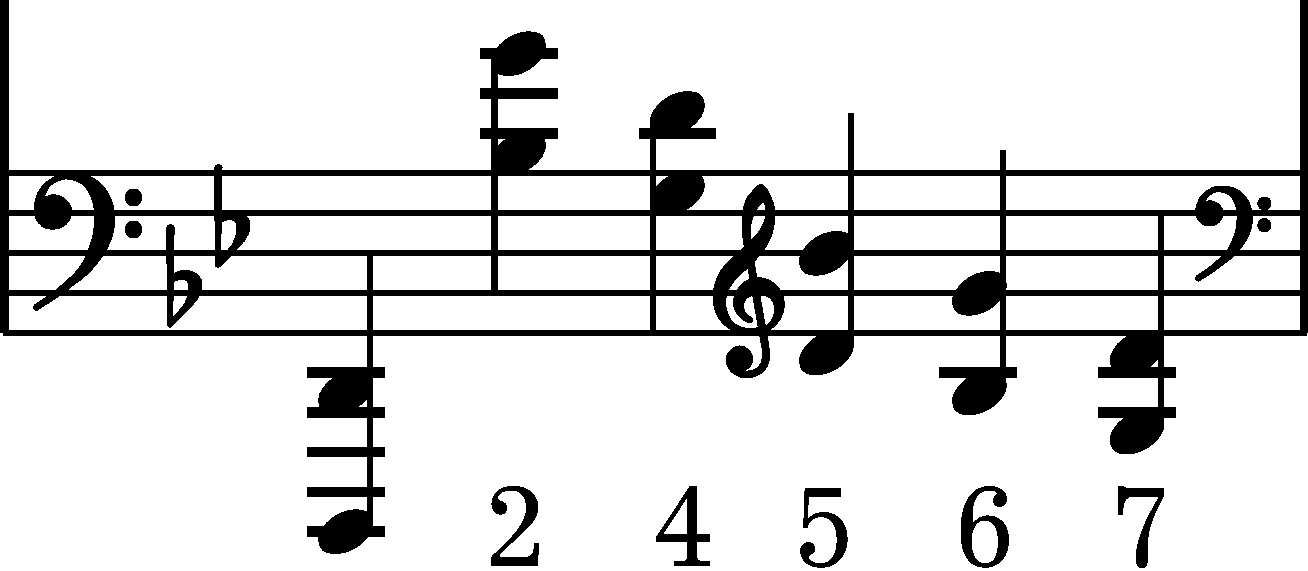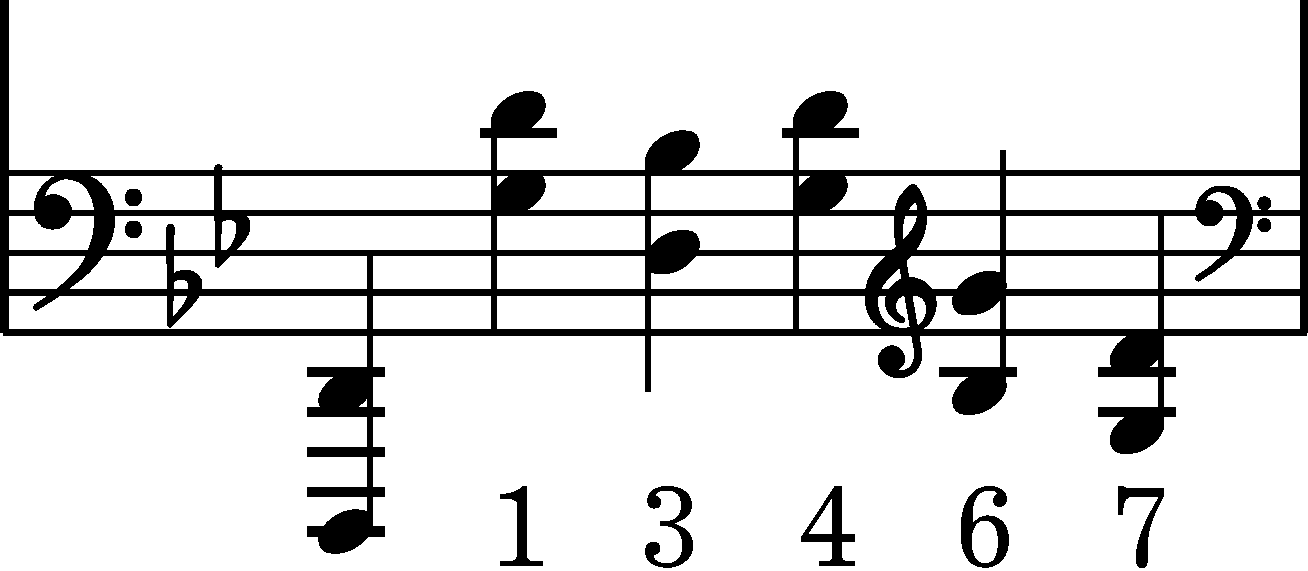



Issues : Deletions in A
|
b. 199
|
composition: Op. 23, Ballade in G minor
..
In A one can see that the last two crotchets were initially d1-g1-b category imprint: Corrections & alterations; Source & stylistic information issues: Deletions in A , Accompaniment changes |
|
|
b. 202-204
|
composition: Op. 23, Ballade in G minor
..
In A we can see the deleted initial version of the first two chords in the bottom L.H. voice, i.e. g-b category imprint: Corrections & alterations; Source & stylistic information issues: Corrections in A , Deletions in A , Accompaniment changes |
|
|
b. 207
|
composition: Op. 23, Ballade in G minor
..
In A, one can see numerous deletions in the L.H. part in this bar – it was only the initial octave that was not changed. Chopin deleted individual crotchets to eventually cross out the entire 2nd half of the bar and write the final version of the last three crotchets on an adjacent stave (below). We present a possible transcription of the main L.H. stave, taking into account a possible interpretation of the deleted crotchets:
category imprint: Corrections & alterations; Source & stylistic information issues: Corrections in A , Deletions in A , Accompaniment changes |
|
|
b. 216
|
composition: Op. 23, Ballade in G minor
..
The deletion visible in A reveals that Chopin initially wrote a crotchet stem for the a category imprint: Corrections & alterations; Source & stylistic information issues: Corrections in A , Deletions in A |
|
|
b. 224-226
|
composition: Op. 23, Ballade in G minor
..
The correction to the last quaver in b. 226 visible in A – it was probably the e category imprint: Corrections & alterations; Source & stylistic information issues: Corrections in A , Errors resulting from corrections , Deletions in A , Main-line changes |

 1 chords, out of which Chopin eventually removed the d1 notes (he introduced an analogous correction into
1 chords, out of which Chopin eventually removed the d1 notes (he introduced an analogous correction into  1.
1. . We would like to point out that the interpretation on the basis of the available photograph is subject to a great deal of uncertainty. Above all, we assume that the deleted crotchets were dyads and not, e.g. triads. The latter cannot be excluded, yet it seems that Chopin was looking for the best position and maybe also shape of this accompanying figure. To guess the initial version on the basis of this notation, we must first determine which of the seven crotchets written there constituted it. According to us, there are two possible approaches:
. We would like to point out that the interpretation on the basis of the available photograph is subject to a great deal of uncertainty. Above all, we assume that the deleted crotchets were dyads and not, e.g. triads. The latter cannot be excluded, yet it seems that Chopin was looking for the best position and maybe also shape of this accompanying figure. To guess the initial version on the basis of this notation, we must first determine which of the seven crotchets written there constituted it. According to us, there are two possible approaches: . This solution, seemingly obvious and musically reasonable, is seriously flawed – it requires an explanation: why would Chopin leave such a big gap between the 2nd and the 5th crotchets when writing this version on an empty stave. After all, he could not have reserved some space for later corrections. We consider the following explanation to be likely – Chopin 'blithely' entered the first half of the bar (bass and crotchets 1 and 2), ignoring the relation to the R.H.; it was only after he had realised that the parts of both hands were out of sync that he wrote the second half correctly. When he later decided to lower the position of this figure – most probably adjusting it to the position of the accompaniment in the next bar – he used the free space to enter the first two crotchets of the final version (nos. 3 and 4) and he crossed out the 2nd half of the bar and wrote the next three crotchets under the deletion.
. This solution, seemingly obvious and musically reasonable, is seriously flawed – it requires an explanation: why would Chopin leave such a big gap between the 2nd and the 5th crotchets when writing this version on an empty stave. After all, he could not have reserved some space for later corrections. We consider the following explanation to be likely – Chopin 'blithely' entered the first half of the bar (bass and crotchets 1 and 2), ignoring the relation to the R.H.; it was only after he had realised that the parts of both hands were out of sync that he wrote the second half correctly. When he later decided to lower the position of this figure – most probably adjusting it to the position of the accompaniment in the next bar – he used the free space to enter the first two crotchets of the final version (nos. 3 and 4) and he crossed out the 2nd half of the bar and wrote the next three crotchets under the deletion. . In this case, one has to assume that the corrections were carried out in two stages. First, crotchet 2 was replaced by crotchet 1, crotchet 3 was added and crotchet 5 was removed:
. In this case, one has to assume that the corrections were carried out in two stages. First, crotchet 2 was replaced by crotchet 1, crotchet 3 was added and crotchet 5 was removed:  . In the second stage, Chopin would delete crotchet 1 and the entire 2nd half of the bar, which he wrote on the stave below in a new version.
. In the second stage, Chopin would delete crotchet 1 and the entire 2nd half of the bar, which he wrote on the stave below in a new version.